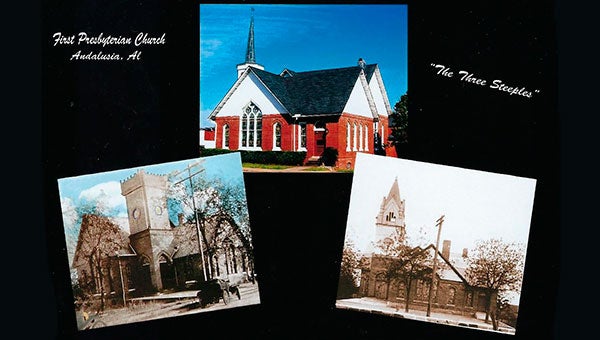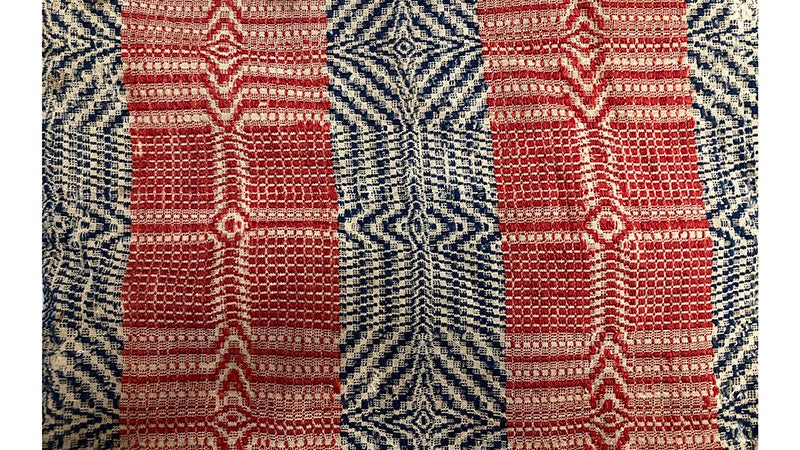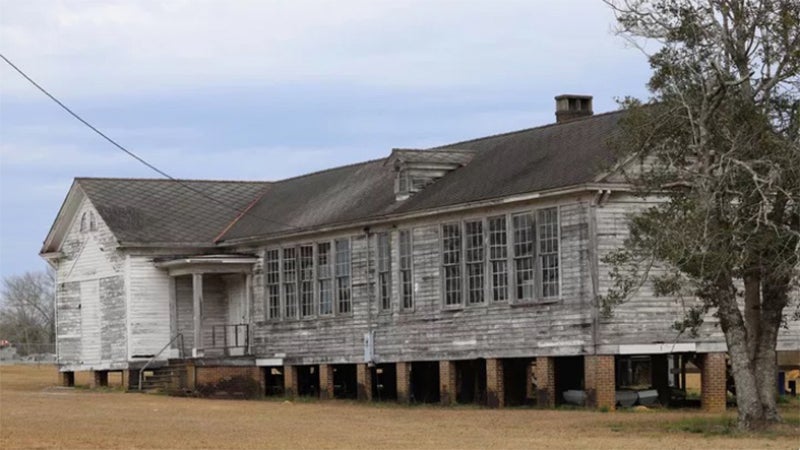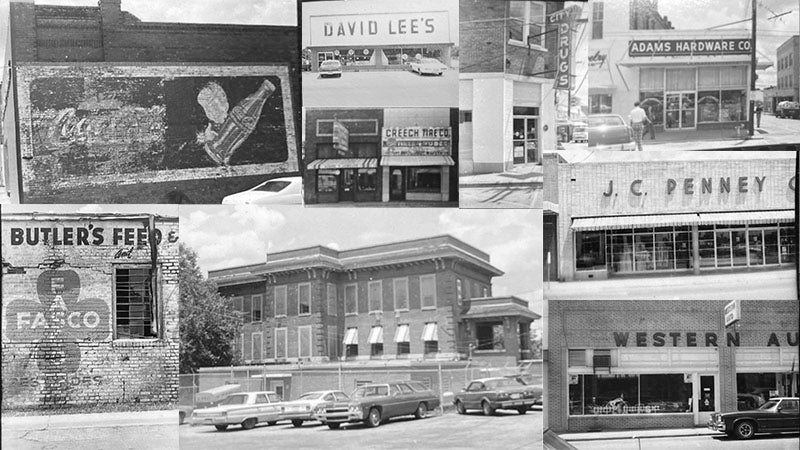Remember When: First Presbyterian Church early history
Published 1:35 am Saturday, February 9, 2019
Recently in visiting the genealogy room of the Andalusia Public Library, I ran across a “History of First Presbyterian Church” written in 1925 – the author’s name is unknown for it was not signed. Archivist Linda Grimes Harrell brought this file to my attention. If you are looking for information on your family, your church, or your school, she may be able to locate and pull up files that are not easily found. So the following is just a brief summary of a written history that ends – “Thus ends the era from ‘Beginning to 1925.’”
“The First Presbyterian Church of Andalusia, Alabama, Covington County was organized December 5, 1901 by J.W. Roseborough, pastor of Union Springs, Alabama with the assistance of Elder W. C. Fowler of the Opelika church.”
“Covington County began early to welcome Presbyterian settlers. In 1825 Mr. W. Mitchell asked Alabama Presbytery to send missionaries into his section. A year later in 1826, a Mr. R.W.B. Kennedy, a young man not ordained, was appointed and commissioned to evangelize not only Covington County but a territory which would be called now Southwest Alabama and Northwest Florida.”
“The town of Andalusia did not appear to have attracted the attention of a Presbyterian minister until almost 50 years later. It first appeared in the U. S. Census of 1880. Not until the turn of the century in April 1901 did the Presbytery consider founding a church in the community when the people themselves evidenced an interest in having a church and Roseborough’s visit resulted.”
“The service was held in the Methodist Church, and the original members numbered nine adults. Mr. N. M. McDonald who had been an Elder before coming to Andalusia was elected and installed and Mr. Duncan Archibald McArtan, who had been a Deacon in the Smyrna Church near Chattahoochee, Florida was installed as Deacon.”
“The only church building in the town belonged to the Methodists (on Church Street) and therefore the Presbyterians had to use the 1895 courthouse (in the middle of Court Square) for public worship.
Not surprising, then, the first thing the new organization called for was an appropriation of $200. to stimulate its membership toward the erection of a church home.”
“It was not long before the population of the town had grown to about 1,500. Making organized church work doubly hard, one of the difficulties was the fact that most of the members did not reside in the town itself. A pastor Craig came from Dothan to see what could be done. He persuaded his seminary mate, the Rev. F. G. Hartman, to come from the Valley of Virginia. Hartman found no property and few members, so he began with two Sabbaths per month, and the Lord used him for signs and wonders.”
“The place of praise was a hall above the First National Bank, a site later occupied by the Andalusia Dry Goods Company and a space once used by the Masonic Hall.”
“About that time Deacon McArtan and his business partner, a Scottish Presbyterian named Mr. D. A. McRainey, risked their finances in the construction of an opera house for cultural events (on the corner of Pear and South Three Notch Streets). Deacon McArtan tendered the use of this brick structure to his fellow church members. The organ used for the services came from the River Falls Church, now defunct. It was in this opera house that the erection of a brick church was envisioned. A cost of $5,000. was estimated. Both McArtan and McRainey contributed $1,000. each.”
“During these times, many well-to-do North Carolinians had moved into the section around Andalusia attracted by cotton seed oil, lumber, and turpentine. They soon were enlisted in the building project. Hartman had been in the field for only three months when this delightful financial situation came about. Due credit must be given Hartman for he had abilities as a designer of churches and also for his actual carpenter skill. Hartman and his wife would come over from Geneva, rent rooms, keep house, serve two full Sabbaths, and then return to Geneva. He would give about ten days out of every month. He also visited the nearby communities of Red Level, Loango, Opp, Samson, and others.”
At this point in the story, I must add that there is no mention on record to my knowledge of an architect involved in the First Presbyterian Church project although there are those today who see similarities in the design of other buildings in Alabama that resemble the work of Architect Frank Lockwood.
Lockwood, a Montgomery architect, who designed scores of residential homes and many important buildings designed in Andalusia the Laurin Avant Home on Sanford Road (1918)), the J. W. Shreve Home (1915), the Anna Riley Home (now razed), the Covington County Courthouse (1917) and Jail (1912), the First National Bank Building (1921), all now listed on the National Register of Historic Places.
Other notable buildings and houses he designed include the Alabama State Capitol (north and south wings); the First Baptist Church of Wetumpka; the Standard Club in Montgomery; the Thigpen House on South Perry (served as the unofficial residence of Gov. Fob James during his first term); the Whitfield Mansion; several fine residences in the Silk Stocking District of Talladega; several buildings on the University of Alabama campus including Smith Hall, Comer Hall, and Morgan Hall; Baldwin Junior High School (originally Lanier High School); and several buildings on the Huntingdon College campus including Flowers Hall, Bellingrath Hall, and the Houghton Memorial Library.
In the Spring 2002 edition of Alabama Heritage magazine, there is a lengthy article on the late Architect Frank Lockwood. There are pictures of the interiors of some of his distinctive designs that certainly resemble the Gothic windows, massive wooden ceilings and supports, and red Alabama brick found in the Andalusia FPC.
Born in New Jersey, Lockwood was the eldest son of an English engineer who had come to America to work on the design and construction of the Brooklyn Bridge, Growing up, young Frank seemed destined for a career in music like his grandfather who had been a chorister at Westminster Abbey. His singing was so well regarded that he was offered, according to family lore, a contract with the Metropolitan Opera Company. His mother, however, persuaded him to study architecture.
The Alabama Heritage magazine reported, “Because of his parentage, most Montgomerians seemed to have considered him an Englishman who had the misfortune to be born in New Jersey rather than just another Yankee come south to make his fortune. He was a good citizen, good man, and well liked. There is a whiff of snobbery in Lockwood’s architecture which no doubt enhanced his appeal among the gentry of Montgomery and other communities. He left his monuments all about him. They will survive as long as the state survives.”
The brilliant Lockwood who died at his home on Adams Avenue in 1936, had a 41-year career and is known today as one of the most prominent and accomplished Alabama architects of the late 19th and early 20th Century.
Back to the 1925 story – “Thanks to the zeal of Deacon McArtan and the counsel of Elder G. W. Cumming, the building was finally completed in 1906 but not for the sum of $5,000. as had been originally planned. In fact, it cost just twice that much. The order for pews and pulpit furniture was being brought in as Hartman was leaving the field.”
“Incidentally, the success of Hartman touched off the zeal of the Baptists who had previously been unable to agree on the building which they needed with the result they learned from the Presbyterians. They seemed to have profited from the happy experience and proceeded to iron out their disagreements and erect their house of worship.”
“By 1910, the church had grown so strong that they called for the full time of their (part-time) pastor Hartman. An agreement could not be reached for the Geneva church refused to let him move away from them. About this time, in 1911, perhaps due to the five-year strain of erecting a ten thousand dollar church building with about 40 members, Hartman thought it best to move to South Carolina.”
“C. N. Wharton will go down in history as the first resident pastor the church ever had. His salary was $1,000. The sanctuary was carpeted and a “Brotherhood” organized. The Presbytery came to install him. Immediately following this meeting, the newspapers were filled with the horror caused by the sinking of the steamship Titanic by an iceberg in the Atlantic Ocean.”
“In the first nine months of Wharton’s pastorate, the membership almost doubled. One of the members installed a heating plant, and the ladies completed their payments on the carpet. The dedication of the church was held in April 1914. The membership by that time had grown from 26 to 82, the Sabbath school increased from 26 to 116, and Wharton’s salary was increased from $1,000. to $1,200. By 1924, the congregation included 23 tithers.
The dedicatory program is housed in the Andalusia Public Library. Many of the descendants of the names of the Elders, Deacons, and Trustees listed are living and still worshipping at First Presbyterian Church today.
There is no mention in this 1925 history of the stained glass windows. However, the late Mrs. William Albritton, church choir director, organist, and historical society member, wrote a detailed report about the windows. She penned, “Stained glass windows were started before the printing of the Word. So churches put in stained glass windows to that when people went to church for special prayer and meditation, they had a ‘page’ to read as they sat there.”
Her vivid description of the windows and their symbolic meaning is another story although she did offer this thought – “Because the three windows on the south side portray the Trinity (the Father, the Son, and the Holy Ghost), I am wondering if the early builders of the church had planned to call the church ‘Trinity Presbyterian Church.’”
Mrs. Ann Long Albritton who endeared herself to so many also added, “You will notice that we sit facing the east in our church. This symbolizes that at final resurrection, we will be facing east. In cemeteries, people are buried with heads to the west so that at resurrection, we will be facing east.”
I suspect that many citizens of the present day who live in the Andalusia area have never viewed the interior of the First Presbyterian Church. Its historic beauty and stunning architecture make it truly a place to worship. We will probably never know whether or not Architect Frank Lockwood designed it since all of the records in his office were destroyed at his death according to Dr. Bill Hansford whose knowledge of Andalusia architecture is astounding.
In conclusion, I will quote a line from a December 28, 1952 church bulletin. It was “Christian Student Night, the entire service being conducted by the college group of this church who are home for vacation.”
“The doors of this church are open as wide as the gates of Heaven. Jesus is calling those who are weak and heavy laden. We invite all who will come in repentance, receiving Christ and confessing Him as Lord and Savior, to unite in fellowship with this church.”
The three steeples that have been on the church have served as a beacon on one of the downtown main streets of Christian faith, hope, and love through more than a century.
Sue Bass Wilson, AHS Class of 1965, and local real estate broker is a long-time member of the Covington Historical Society. She can be reached at suebwilson47@gmail.com.






